Trauma is more than just a memory. It’s something that can live in the body, mind, and heart long after an event is over. For many people, talking about it can be hard. Sometimes, words just aren’t enough. That’s why music, art, and movement have become powerful tools in the journey of healing. These therapies work in a different way. They speak to the parts of us that are quiet, hurt, or hidden. They help us express things we can’t always say.
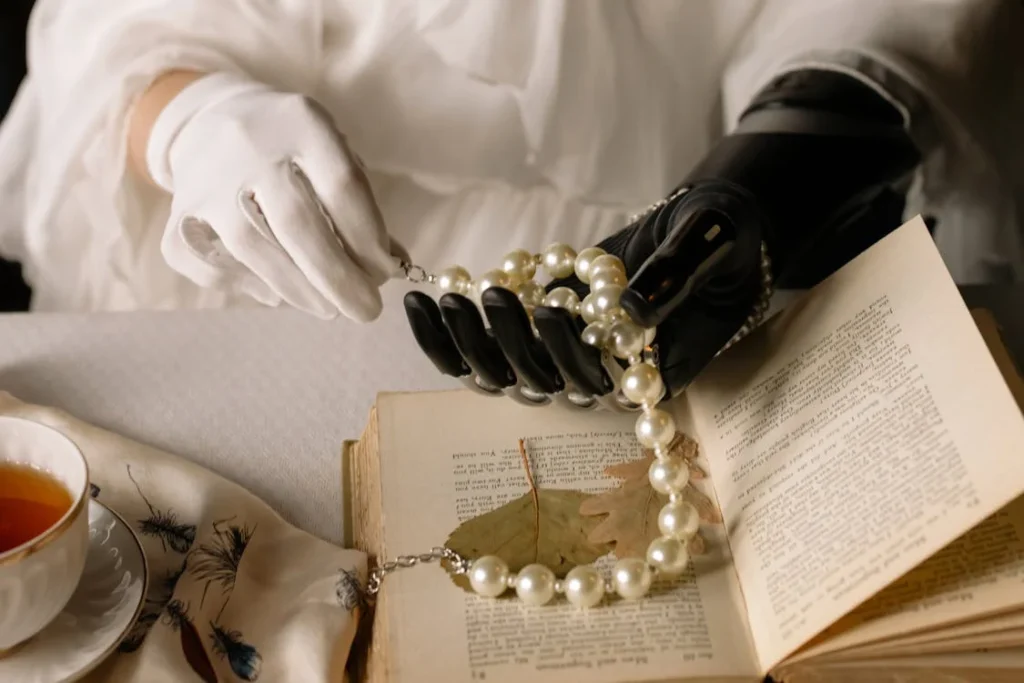
Understanding Trauma and the Need for Creative Healing
What Trauma Does to the Mind and Body
Trauma doesn’t always leave a visible scar, but it leaves its mark in powerful and lasting ways. It can come from one event, like an accident or surgery, or from something that happened over time, like ongoing illness, abuse, or loss.
Trauma shakes the foundation of safety. It creates fear, confusion, and sometimes a deep sense of helplessness that doesn’t go away easily.
The mind may replay the experience again and again, through nightmares, flashbacks, or sudden fear. The body often stays tense, ready to react, even when there is no danger.
Some people feel numb, while others feel overwhelmed by emotion. Relationships suffer. Sleep breaks down. Motivation disappears.
These are not signs of weakness—they’re signs of an overwhelmed system that’s trying to protect itself.
Traditional talk therapy helps many people, but it doesn’t work for everyone. Especially when the trauma is stored in the body, not just the mind.
That’s where music, art, and movement therapies come in. They don’t rely on words. They let healing happen through sound, color, motion, and expression.
Why Talking Isn’t Always Enough
When someone has experienced trauma, especially something deeply physical like losing a limb or surviving violence, it can be hard to explain how they feel.
Words often fall short. Sometimes, there are no words at all. A person might shut down emotionally, or feel ashamed, or afraid they won’t be understood. And when feelings stay trapped inside, the healing process slows down.
Creative therapies offer another way. They invite people to communicate without speaking. A stroke of paint can show sadness. A song can carry a memory.
A simple dance movement can release fear. These forms of expression go deeper than words. They reach the quiet parts of the soul where pain still lives.
That’s why music, art, and movement are not just hobbies or distractions. They are tools of recovery. They allow people to feel seen and heard in ways they never thought possible. And in that process, real change begins.
How the Brain Responds to Creative Therapies
Science has shown us that trauma changes how the brain works. It affects the parts of the brain that manage memory, emotion, and decision-making.
But here’s the good news—the brain is flexible. It can grow. It can adapt. And it can heal.
Creative therapies use this ability to rewire the brain. When someone creates art, listens to music, or moves their body in a guided way, the brain begins to form new patterns.
Safe patterns. Patterns that soothe instead of stress. Music has been shown to calm the nervous system. Art helps process emotions. Movement helps release stuck energy.
Over time, these therapies can reduce anxiety, improve sleep, build confidence, and make people feel more in control of their lives. They give back something that trauma took away—hope.
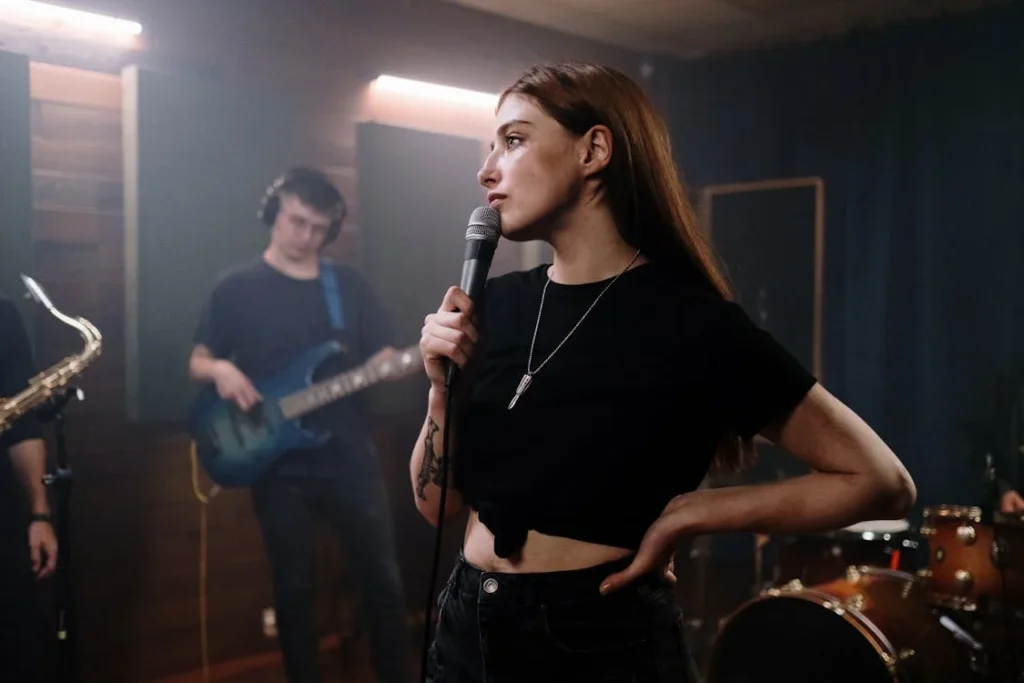
Music Therapy: Healing Through Sound and Rhythm
The Power of Music in Emotional Recovery
Music has been a part of human life for thousands of years. From lullabies sung to children to the songs that mark our celebrations, it connects deeply to emotion.
That’s what makes it so effective in trauma recovery. Music goes straight to the heart. It doesn’t ask for logic or words. It simply enters and speaks.
For people dealing with trauma, especially after a life-changing experience like an amputation or a severe injury, music can provide calm when nothing else works. It creates a space where emotions can rise safely.
A soft melody can bring comfort. A steady rhythm can ground the body. A familiar song can remind someone of who they are, even if they feel lost.
Music therapy doesn’t mean you need to be a singer or musician. It can be as simple as listening to a piece of music with the guidance of a therapist.
Sometimes, it involves playing simple instruments, writing lyrics, or even just talking about how a song makes you feel. These activities allow emotional expression in a way that doesn’t feel forced.
Calming the Nervous System With Sound
One of the biggest struggles after trauma is a nervous system that stays on high alert. This means a person may feel tense, jumpy, or tired all the time.
Music helps reset that system. Studies show that listening to calm, rhythmic music can lower the heart rate, ease breathing, and reduce levels of stress hormones in the body.
When used regularly, music therapy can train the brain to find peace again. It creates a rhythm not just in sound, but in life. Morning playlists to set a gentle tone.
Evening sounds to invite rest. Music becomes more than a background noise—it becomes medicine.
Even people with physical limitations can take part. You don’t need movement. You just need a willingness to listen. Over time, the body begins to remember what calm feels like, and that memory becomes a foundation for healing.
Finding Your Own Soundtrack to Recovery
Every person’s healing journey sounds different. Some may connect with classical music. Others find comfort in traditional Indian instruments.
Some need soft sounds, while others prefer energetic beats. The beauty of music therapy is that it is personal. It meets you where you are.
Therapists often guide patients to create playlists that support different emotional needs. One for peace. One for motivation.
One for sadness. These playlists become tools to carry through the day. They’re always there, ready when needed.
And over time, many find themselves creating music of their own. Writing songs. Humming new tunes. Singing softly in moments of quiet. These small actions show that healing is taking root. Music gives the soul its voice back.
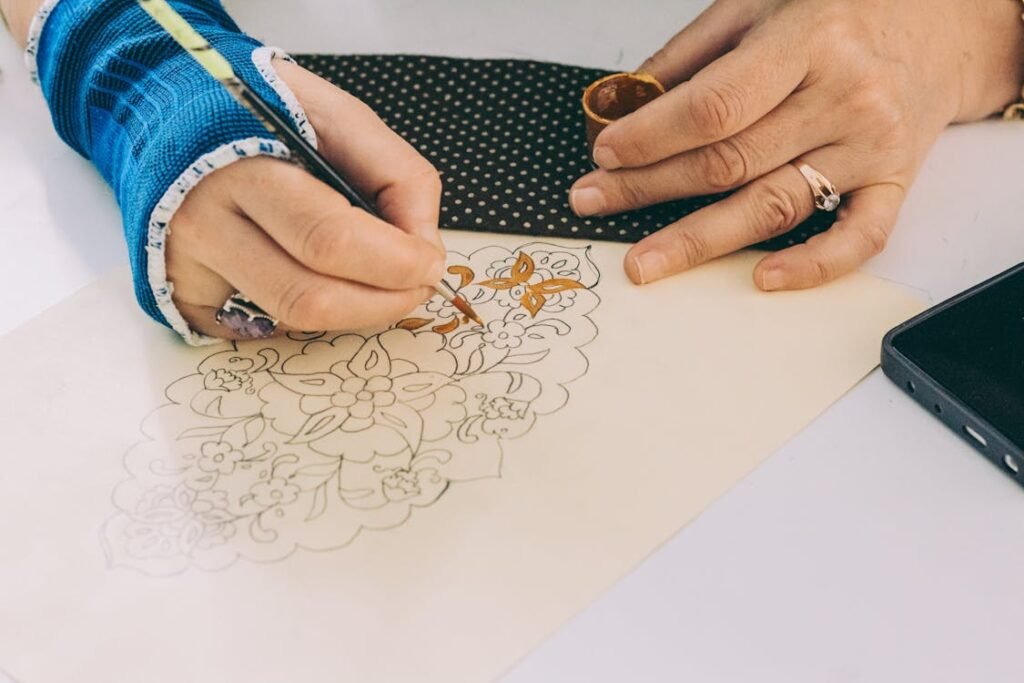
Art Therapy: Drawing Out Emotions Without Words
Why Creating Art Heals
There is something powerful about picking up a brush, a pencil, or a lump of clay and simply starting to create. When someone is recovering from trauma, they often carry feelings that are hard to name.
Fear, sadness, anger, and confusion all mix together in ways that feel too tangled to explain. Art helps untangle them—not by forcing them into words, but by letting the hands speak.
In art therapy, there’s no right or wrong way to create. You don’t need to know how to draw or paint. It’s not about making something beautiful. It’s about making something real.
When someone creates a piece of art that reflects what they’re feeling inside, even if they don’t understand it fully, it opens the door to healing.
For people who’ve faced amputation or physical trauma, art becomes a safe place to explore body image, pain, and change.
A painting can show how the body feels now. A sketch can show fear without needing to describe it. Through art, the invisible becomes visible—and once it’s visible, it can be faced.
Making the Unspoken Seen
Sometimes, trauma makes people feel invisible. Their pain isn’t obvious to others. They may carry deep hurt that doesn’t show on the surface.
Art helps bring that hidden part into the light. It allows people to see their pain clearly, without judgment. And in doing so, it brings relief.
In guided art therapy sessions, a therapist may ask gentle questions as the person draws or paints. “What does this color remind you of?” “What’s happening in this picture?” These questions are not about art skills—they’re about feelings.
Over time, the person may start to notice patterns in their art. Certain shapes, colors, or images that show up again and again. These patterns can give insight into what’s happening emotionally, even if the person can’t say it out loud.
Some people draw storms. Others draw doors, walls, or eyes. Each image carries meaning. And when those images are explored in a safe space, they become stepping stones toward recovery.
Building Confidence Through Creative Expression
Trauma often shatters confidence. It leaves people doubting their worth and their strength. Art therapy gently builds that confidence back.
Every finished piece becomes proof: “I made something.” That feeling of creating something with your own hands, no matter how simple, sparks pride.
Even the act of choosing colors or materials can be empowering. It gives control back to the person, something that trauma often takes away.
Over time, creating becomes a form of self-trust. “If I can make this, maybe I can handle more than I thought.”
Many people find that their art begins to change as they heal. What started as dark or angry may begin to soften. Bright colors may return.
Hopeful shapes might emerge. These changes aren’t forced—they come naturally, as the mind begins to feel safe again.
Art also creates a record of the healing journey. Each piece is a snapshot in time. Looking back at earlier works often shows how far a person has come. And that, in itself, becomes a source of strength.
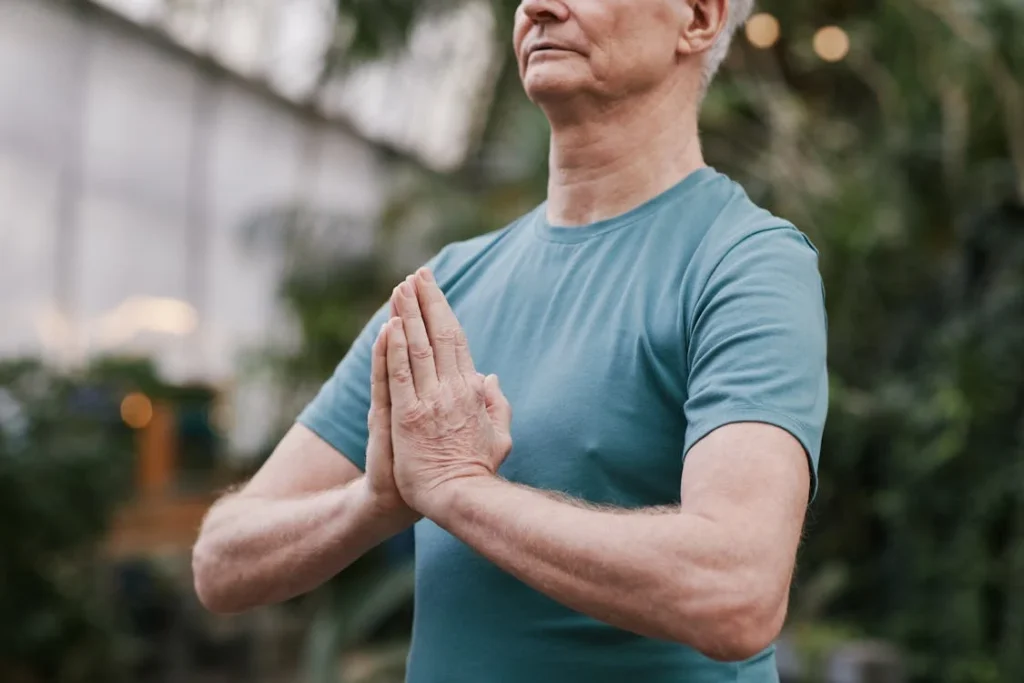
Movement Therapy: Releasing Trauma Stored in the Body
How Trauma Lives in the Body
Many people think of trauma as something that only affects the mind, but that’s not the whole picture. Trauma is also physical.
It gets stored in the muscles, in the posture, in the way a person breathes and moves—or stops moving. After a traumatic experience like an accident or amputation, the body often becomes tense, stiff, or shut down. Movement becomes limited, not just because of injury, but because of fear.
People often don’t realize how much their body has changed until they try to move again. Something simple—like stretching an arm or turning the neck—can suddenly feel uncomfortable or even frightening.
Movement therapy gently helps people notice these changes, and then slowly begin to shift them.
Unlike regular exercise, movement therapy is not about fitness. It’s not about getting stronger or faster.
It’s about learning to feel safe inside your own body again. It’s about exploring what your body can do now, and reconnecting with it without fear.
The Language of Movement
When words are too hard, the body speaks. Movement therapy creates a space where people can express feelings through motion. A raised hand might express frustration.
A slow walk might show grief. A powerful stomp can release anger. These movements don’t need to be planned or pretty—they just need to be honest.
Guided by a trained therapist, the person is encouraged to move in a way that feels right. Some sessions are quiet, with slow stretches and breathing.
Others are more active, with flowing motions or gentle dance. Sometimes music is used to support the rhythm. Sometimes it’s done in silence, to let the body lead.
This kind of movement is not performance. It’s exploration. As people move, they often discover areas of tension or numbness.
They might feel emotions rising that they didn’t expect. These are signs of progress. Movement wakes up parts of the body that trauma had silenced.
Movement Therapy for Amputees
For someone who has lost a limb, movement therapy offers a special kind of healing. It helps them build a new relationship with their body—one that honors what was lost but also celebrates what remains.
Movement becomes a way to adapt, to adjust, and to feel whole again.
Therapists work carefully to support each person’s abilities. If someone is using a prosthetic, the movements may be adjusted to build trust and balance.
If the person is in a wheelchair, seated movement can be used. The goal is never to push, but to invite motion back into the body in a way that feels safe and empowering.
One of the most powerful things we’ve seen at Robobionics is how movement therapy helps amputees reclaim joy. We’ve watched people who once felt frozen begin to sway to music.
We’ve seen them laugh as they explore movement again, not as patients, but as people. These moments are healing. They are reminders that the body is not just a place of pain—it can also be a place of possibility.
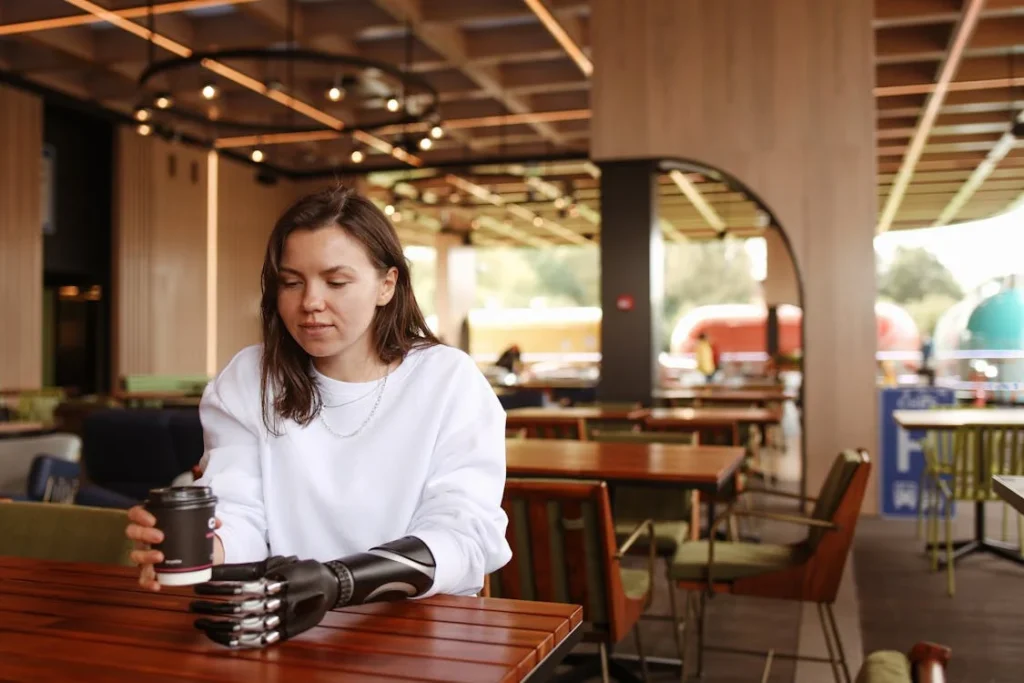
The Power of Integration: When Music, Art, and Movement Work Together
Healing the Whole Self
Each creative therapy—music, art, and movement—offers something powerful on its own. But when these therapies are blended thoughtfully, the healing becomes more complete.
That’s because trauma doesn’t live in just one part of a person. It lives in thoughts, emotions, senses, body movements, memories, and sometimes even silence.
So, to truly support someone recovering from trauma, healing must happen on all those levels.
Integrated creative therapy allows this to happen. When a person paints while listening to calming music, or moves to the rhythm of a song and later reflects on the experience through drawing, something deeper is unlocked.
It’s no longer just about managing pain or calming anxiety—it becomes a full-body, full-mind experience of release, discovery, and growth.
This approach creates harmony between parts of the self that trauma tried to separate. The body reconnects with the mind.
The emotions connect with expression. Confidence grows quietly, not from talking about change, but from feeling it.
A Real-Life Example: The Healing Flow
Imagine an amputee who begins a session with slow breathing and music. The music is soft, rhythmic—just enough to slow their racing thoughts.
They’re invited to move, even just their hands or upper body. At first, the motion is stiff. But as the song continues, their shoulders loosen. They begin to move in small, steady ways.
Afterwards, they sit down with colored pastels and draw whatever comes to mind. There’s no pressure, no need for explanation. The drawing is simple, but expressive.
The therapist gently asks what they felt during the music and the movement. Maybe it reminded them of a memory. Maybe it brought tears or peace.
This flow—from music to motion to art—guides the nervous system through a complete cycle. It engages the senses, the body, and the heart.
And by the end, even if no deep discussion happens, the person has touched their inner world in a safe and healing way.
Why This Approach Works So Well for Trauma
Trauma often causes people to disconnect—from their body, from others, and from their own sense of identity. Integrated creative therapy invites connection to return.
When music sets the emotional tone, movement brings it into the body, and art captures it visually, the brain starts making new links.
This process helps reorganize trauma memories and calms the stress response in a deep and lasting way.
It also strengthens the person’s sense of control. They decide how fast or slow the session goes. They choose the colors, the movement, the sounds.
That freedom builds trust—not just in the therapist, but in themselves. And in trauma recovery, self-trust is everything.
Over time, this approach can also lead to deeper insights. A person might begin to recognize certain patterns in their drawings, or notice how their movement changes as their mood shifts.
These discoveries aren’t forced—they grow naturally. And they help the person understand themselves in a kinder, more connected way.
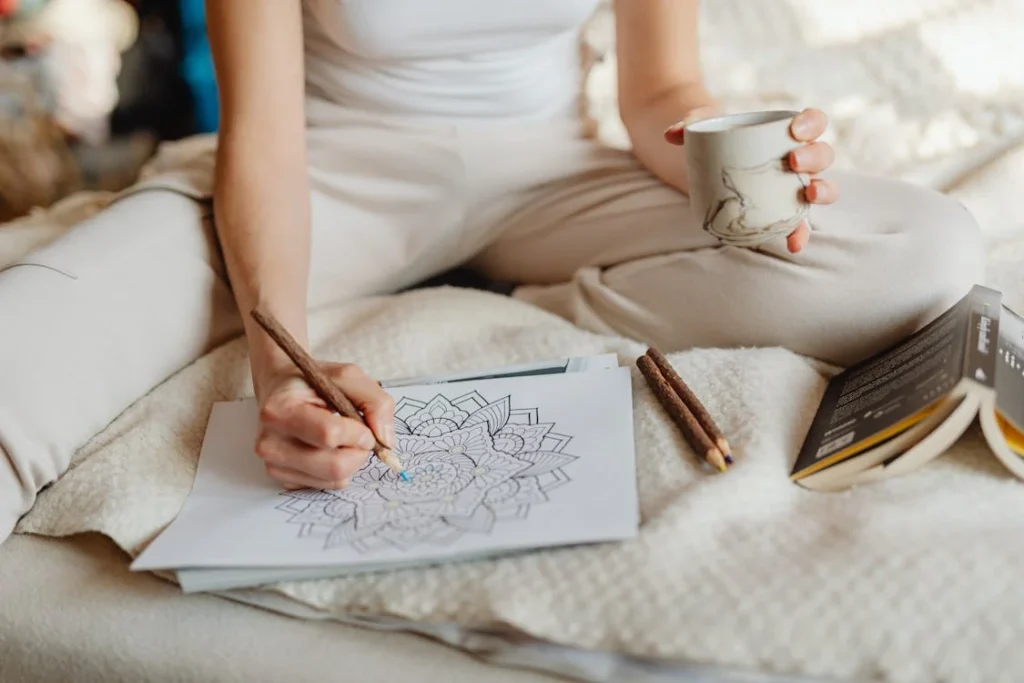
Creative Healing as a Lifelong Companion
Beyond Recovery: Growing Into a New Self
When someone begins the journey of trauma recovery, the goal is often just to feel okay again. To sleep. To breathe.
To stop feeling afraid. But creative therapies don’t just bring a person back to “normal.” They help them grow into something new—something even stronger, even more whole than before.
Music, art, and movement don’t stop being useful once the pain softens. They stay with the person, becoming a personal language of healing that can be used again and again throughout life.
When a difficult day comes, they know what to do. When emotions rise and words fail, they can turn to paint or melody or motion. This becomes a personal practice. Not therapy in the formal sense, but therapy as a way of living.
For many, this leads to new passions. Some go on to paint professionally. Others take up dance or musical instruments. Some become therapists themselves, using their story to help others heal. This is what recovery looks like at its best—not just surviving, but flourishing.
Creating Safe Spaces at Home and in the Community
Healing should never be something that only happens behind closed doors. As more people discover the power of creative therapy, families and communities can help build spaces where these tools are part of everyday life.
A small room at home with a speaker, a sketchpad, and space to move can become a personal sanctuary. In community centers, schools, or support groups, guided sessions can help others who are struggling feel less alone. These spaces don’t need to be perfect. They just need to feel safe, open, and welcoming.
In our work at Robobionics, we’ve seen how even one workshop can spark something deep in a person. A single song. One painting. A shared dance. These moments matter. They start a ripple. They remind us that healing is always possible, no matter how long it’s been, no matter what was lost.
Conclusion
Trauma doesn’t follow a schedule. It doesn’t respond to pressure or shame. It asks for patience, for presence, and for space to unfold. Music, art, and movement offer that space. They invite the pain out of hiding. They offer comfort when words fall short. They allow the body to speak, the heart to feel, and the mind to soften.
Whether you’re healing from physical trauma, emotional wounds, or years of silent suffering, creative therapies are here for you. They require no talent, no special training—only willingness. Willingness to try. To feel. To begin.
At Robobionics, we believe healing is a full-body, full-heart journey. And we stand beside every person who chooses to take that first step—whether it’s with a song, a brush, or a simple movement.
Let the healing begin—not someday, but now.




Pingback: From New York, California to Texas: How Chess Is Becoming the New Parenting Secret Weapon - Mothers Always Right